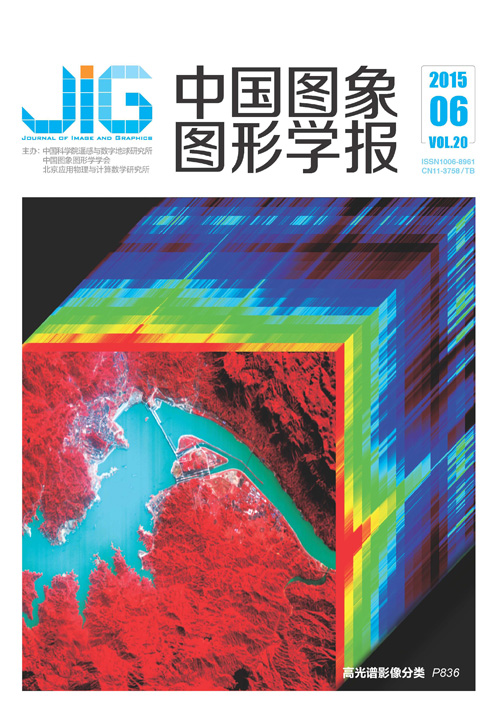
融合图像感知哈希技术的运动目标跟踪
摘 要
目的 为解决运动目标跟踪时因遮挡、尺度变换等产生的目标丢失以及传统匹配跟踪算法计算复杂度高等问题,提出一种融合图像感知哈希技术的运动目标跟踪算法.方法 本文算法利用感知哈希技术提取目标摘要进行模板图像识别匹配,采用匹配跟踪策略和搜索跟踪策略相配合来准确跟踪目标,并构建模板评价函数和模板更新准则实现目标模板的自适应更新,保证其在目标发生遮挡和尺度变换情况下的适应性.结果 该算法与基于NCC(normalized cross correlation)的模板匹配跟踪算法、Mean-shift跟踪算法以及压缩跟踪算法相比,在目标尺度变换和物体遮挡时,跟踪的连续性和稳定性更好,且具有较低的计算复杂度,能分别降低跟踪系统约6.2%、 6.3%、 9.3%的计算时间.结论 本文算法能有效实现视频场景中目标发生遮挡及尺度变换情况下的跟踪,跟踪的连续性和稳定性良好,且算法具有较低的计算复杂度,有利于实时性跟踪系统的构建.
关键词
Object tracking algorithm based on perception hash technology
Li Ziyin, Zhu Mingling, Chen Zhu(College of Optical and Electronic Technology, China Jiliang University, Hangzhou 310018, China) Abstract
Objective Object tracking process is a key step in intelligent surveillance. A new object tracking algorithm based on perception hash is proposed to solve the problem of losing a target caused by mutual occlusion and relatively large scale change of tracking a target, as well as reduce the computational complexity of the traditional tracking algorithms based on template matching. Method The proposed algorithm introduces perception hash to help in the tracking. Perception hash is a one-way map from a multimedia presentation to a perceptual hash code, which means that the multimedia data that contain similar perceptual contents will result in the same hash code and that multimedia data with different perceptual content will result in different hash codes. Perceptual robustness and security make the perception hash reliable for image identification, retrieval, and authentication. Perception hash is used to generate the hash codes of template images and of foreground target images. Hash code is used for matching. In our algorithm, the hash code is abstracted from the DCT (discrete cosine transform) coefficients of an image and is a binary string. In this paper, we use hamming distance between the hash codes of template images and of foreground target images to distinguish similarities. When tracking, the new algorithm searches for the most similar object as the optimal match template for each moving target in the upcoming frame, and the objects that marched are the foreground regions detected by VIBE. The tracking process is called matching strategy. The optimal match template found in the matching strategy records the accurate position and dimension information of a movingtorger, but fails to track the targets with similar perceptual content. To overcome the weakness of the matching strategy, a searching strategy is designed for further tracking. The searching strategy searches the most similar image region surrounding the moving target to be tracked with the use of diamond search. Subsequently,we divide a rectangular area five times as big as the former one, and then carry out the matching strategy again to get an optimal match template. The accuracy of the optimal match template obtained in each frame is verified by the template evaluation function designed in the proposed algorithm. In addition, an adaptive template update strategy is designed for continuous tracking. The template evaluation function and update strategy ensure good adaptability against occlusion and variation of targets when tracking.Result Compared with the NCC, mean-shift, and the compressive tracking algorithm, the proposed algorithm is more robust when the target is occluded or has large scale change. In addition, the proposed algorithm has lower computational complexity and time cost is reduced by 6.2%, 6.3%, and 9.3%, respectively, compared with the three algorithms previonsly mentioned. Conclusion The proposed object tracking algorithm features better adaptability against occlusion and variation of targets when tracking and has lower time cost. The algorithm can help to build a real-time tracking system.
Keywords
target tracking mutual occlusion large scale change perception hash adaptive template update template matching
|



 中国图象图形学报 │ 京ICP备05080539号-4 │ 本系统由
中国图象图形学报 │ 京ICP备05080539号-4 │ 本系统由